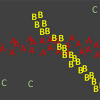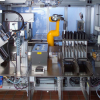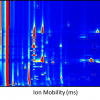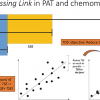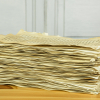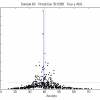A.M.C. Davies
Norwich Near Infrared Consultancy, 10 Aspen Way, Cringleford, Norwich NR4 6UA, UK. E-mail: [email protected]
Introduction
I’m sorry if this column appears to be confusing. Part of this is due to the title but it is also due to the manner in which this column originated. I have had three topics under consideration for this issue. I have had difficulty getting the first option started, then the second option (which was about looking at spectra) required a permission which I began to doubt would come in time and I began to think about the third (noise spectra). Then the permission came through for option 2 and I immediately realised that my third option was a perfect example of the second option! So this article is my second topic (looking at spectra) but it concerns noise spectra. I hope you are still with me!
I am taking this one first because the experience is earlier than the second example and for me it was an important learning event. At first I refused to look at an (NIR) spectrum because I knew that there was nothing to see! I always remember this when I instruct students on NIR spectroscopy courses to “Always look at the spectrum”!
NIR spectrometers and noise
One of the essential characteristics of NIR spectrometers is that they must have very low noise levels and instrument manufacturers provide programs to check that the spectrometer is operating within the specified limits. These operate by reading a sample twice, normally the ceramic reflectance standard, calling the first reading “reference” and the second “sample” to give a resulting noise “spectrum”. It analyses this noise spectrum for the position and size of the maximum peak height and computes the root mean square (RMS) height across the spectrum as an estimate of noise. The program was programmed to iterate a specified number of times (usually around 20) and then report an average RMS noise.
In 1985 there was a very active UK NIR User Group and for one of our meetings Ian Cowe organised a principal component study of our spectrometers. (Between us we had a large percentage of the total world population of NIR spectrometers!) For this study Ian required all the data that was measured but not saved by the noise program, and he requested that we should emulate the program and save the data manually. I explained what was required to an assistant, Simon, and left him to acquire the data.
I was especially interested to learn what Ian would discover because we had been reporting out-of-spec RMS noise to the instrument manufacturer and their engineer had rebuilt the instrument with new detectors but had not solved the problem. Of course the noise “spectrum” was never displayed; why would anyone want to look at it? Thus I was slightly irritated when Simon asked me to come and see his first noise spectrum. “It is just noise, Simon”, but he insisted. I was truly amazed by what was on the screen, Figure 1!



At this time the spectrometer was housed in a small air-conditioned laboratory which had taken over two years to acquire and we had been occupying it for about nine months. When we plotted 20 noise spectra we found that some exhibited positive peaks while others were negative, Figure 2. Many years earlier I had experienced a noise problem in an instrument that was caused by a temperature programmer in an adjacent GLC instrument so my first guess was that the air-conditioner was the cause. We switched it off and were pleased to see the noise disappear, Figure 3. We then started to try to understand how an air-conditioner could give rise to such a complex and repeatable signature. The air-conditioning unit was of the heat exchanger type which was cooled by a liquid (refrigeration type 22) pumped from a remote cooling system and laboratory air was circulated through it continuously. Temperature control was achieved by switching the refrigerant pump on or off. When we recorded the temperature of the laboratory air we found that that the temperature cycle time was around two minutes which was slightly greater than the time required to measure and record a spectrum. The instrument also recorded the laboratory humidity and we were very interested to see that it was also cycling in phase with the temperature. At this point we began to wonder if the noise was caused by water vapour although this seemed unlikely as everybody knows that “NIR spectroscopy is not a sensitive technique”. However, we realised that when the air-conditioning was in its cooling phase, water vapour would condense on the cool surfaces and this would evaporate during the off phase. Confirmation of this idea was difficult because the only published spectra of water vapour that I could find had been recorded on high resolution instruments and these bore only slight resemblance to our noise. Karl Norris came to our rescue by sending me spectra recorded at two slit-width settings, the spectrum at the 10 nm setting is shown in Figure 4. The reason why a small change in humidity can cause such a significant noise spectrum is because the optical system of the spectrometer is cooled by blowing laboratory air through the system thus providing a path length of about a metre in a single-beam spectrometer.

The question of the importance of this noise and how to minimise it is not relevant to this column but anyone interested can find some additional information in the references.1,2 It may have been known for some time but it is still a current problem. While I was planning this article there was an information request on the NIR Discussion Forum3 “Hi, we are getting interferences at some of our sites and when the performance test does not pass, the noise spectra looks like the one in the attached document. There are peaks and valleys in the range 1300 to 1450 and again at 1800 to 1900.”
The message from this column (which has been my maxim since 1985) is that if it may be valuable to look at noise spectra, is there any spectrum that we should not look at?
A “Simon” test for automated spectroscopy
It would appear that I am at odds with my colleague Tony (N)! In last month’s Tony Davies column4 he was discussing the automated identification of 1H NMR spectra. Of course this is a very necessary development given the speed of modern analysis and the examples he showed were very impressive. However, I would like to propose that all automated methods of analysing spectra should incorporate a “Simon function”. This would be the first filter and it would test the spectrum for abnormality and the output message for an affirmative result would be “Look at me, I’m unusual”. How is this to be done? I have no idea, but I’m sure it could and should be attempted. Humans have some attributes that are very difficult to convert into chemometric computer codes. We should make use of them and remain in command of our computers!
Acknowledgements
When I asked Karl Norris how he had obtained the water vapour spectrum he told me he had introduced steam into his famous spectrometer from a laboratory kettle. I question the wisdom of such an action but he said “Oh we wouldn’t do it for just anyone”! This is one of many reasons for my gratitude to him. Since this event in 1985, I have been grateful to my former assistant, Simon Gonzales, for teaching me a valuable lesson.
References
- A.M.C. Davies and A. Grant, Appl. Spectrosc. 41, 1248 (1987).
- A.M.C. Davies, NIR news 3(1), 8 (1992).
- http://www.impublications.com/cgi-bin/discus/discus.cgi
- C. Cobas, F. Seoane, S. Domínguez, S. Sykora with A.N. Davies, Spectrosc. Europe 23(1), 26 (2011).


